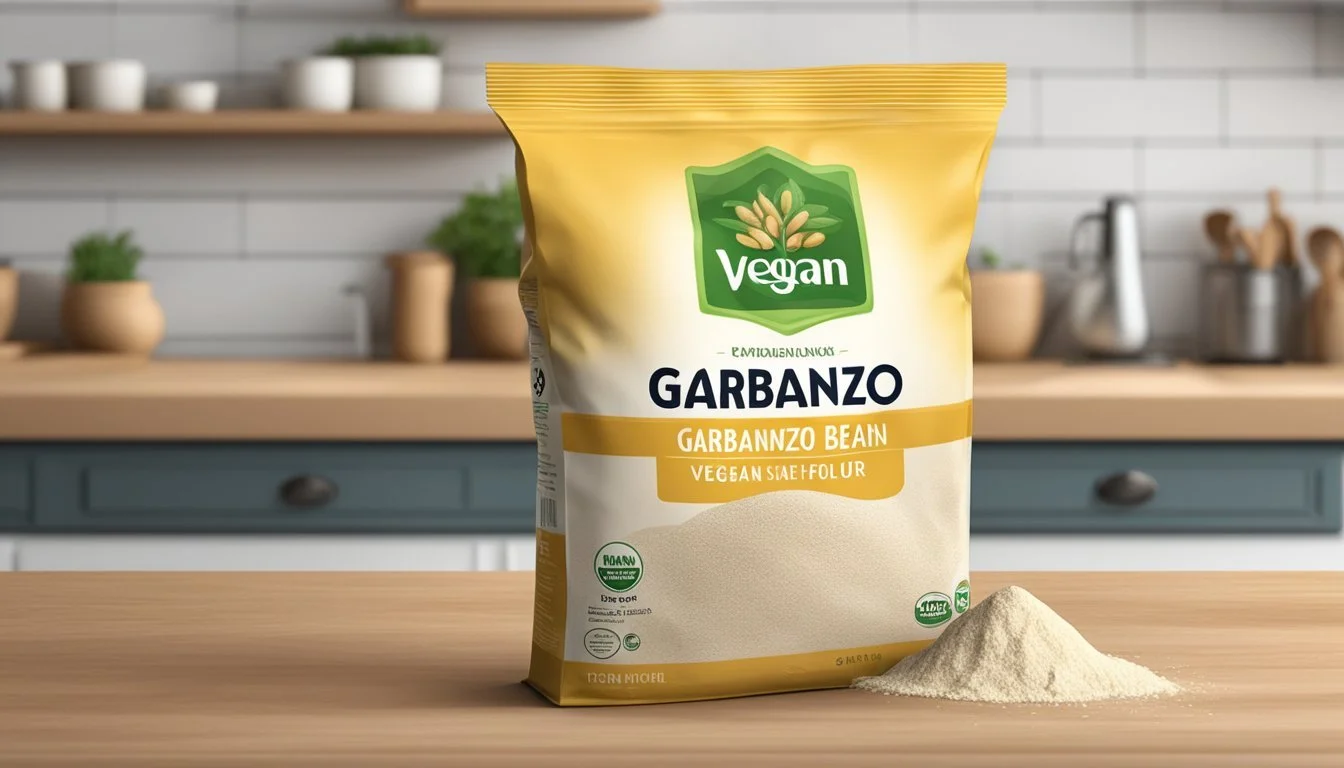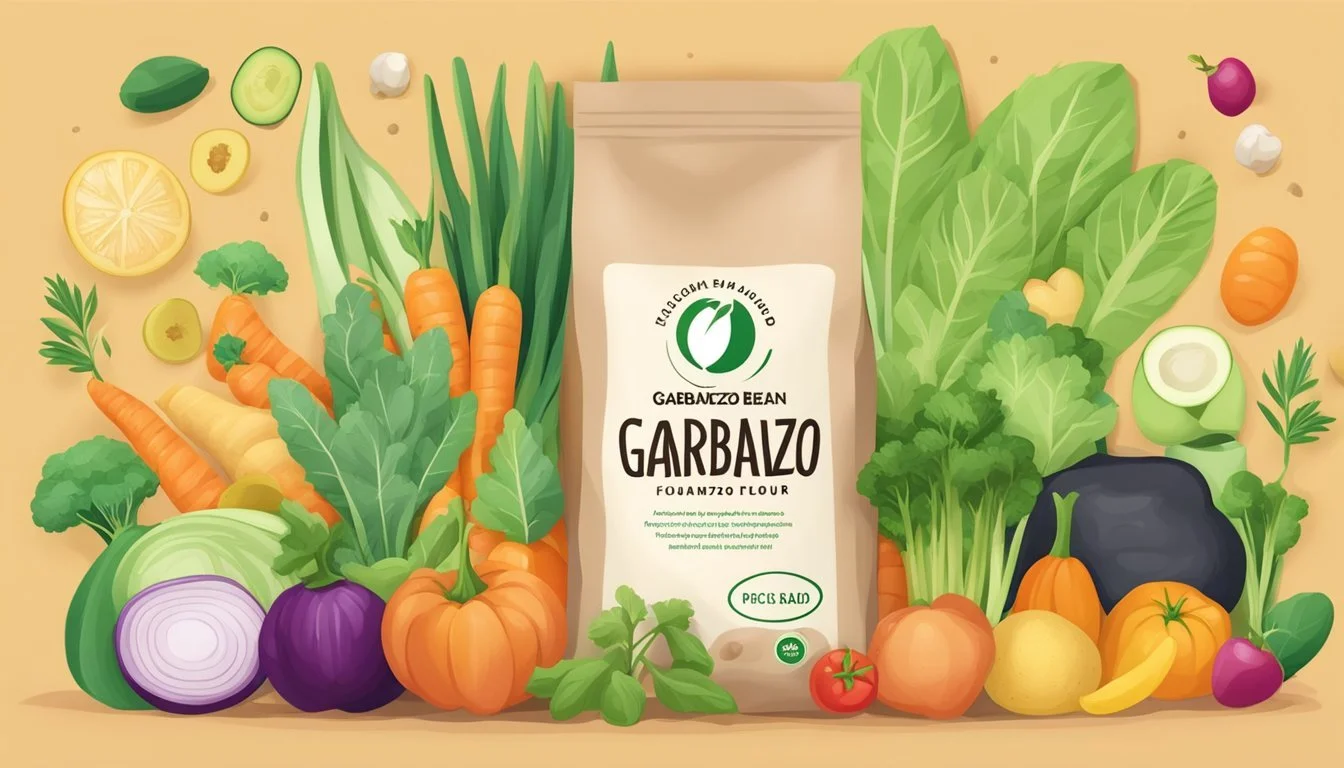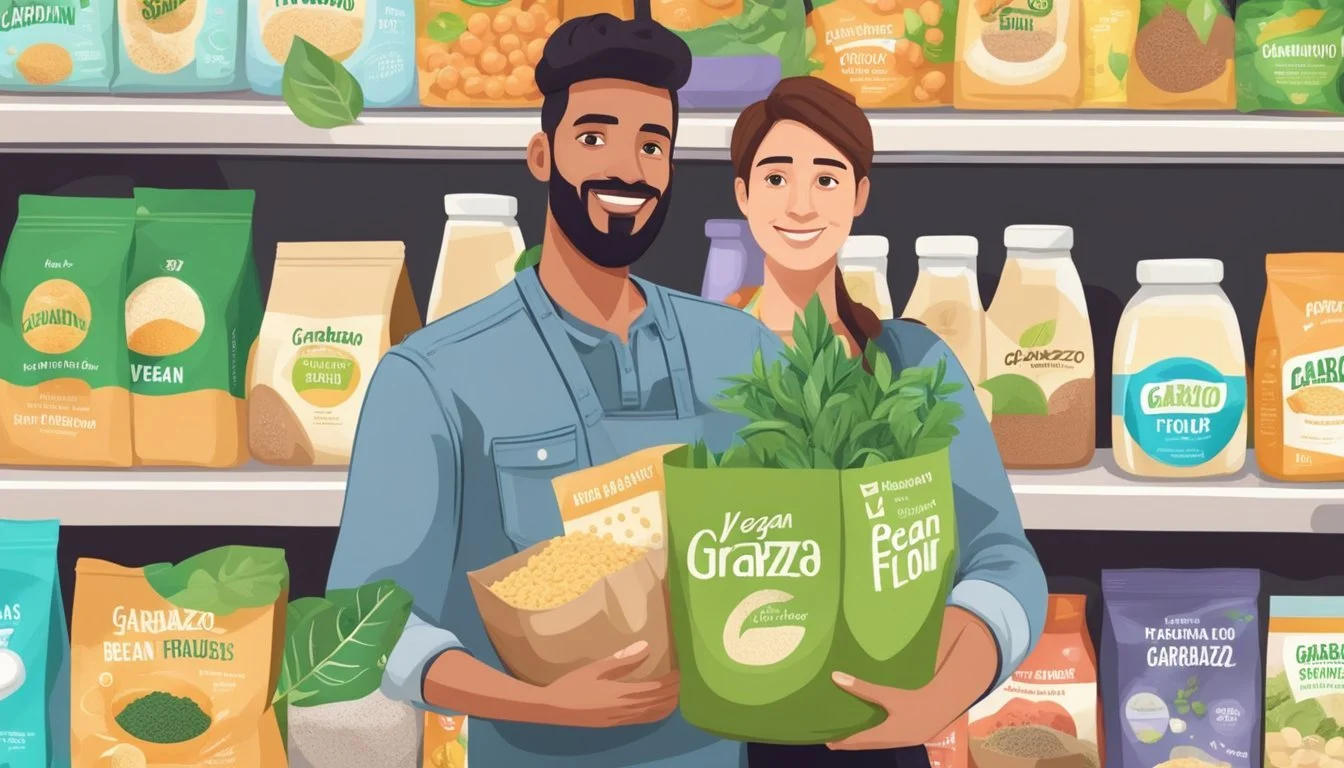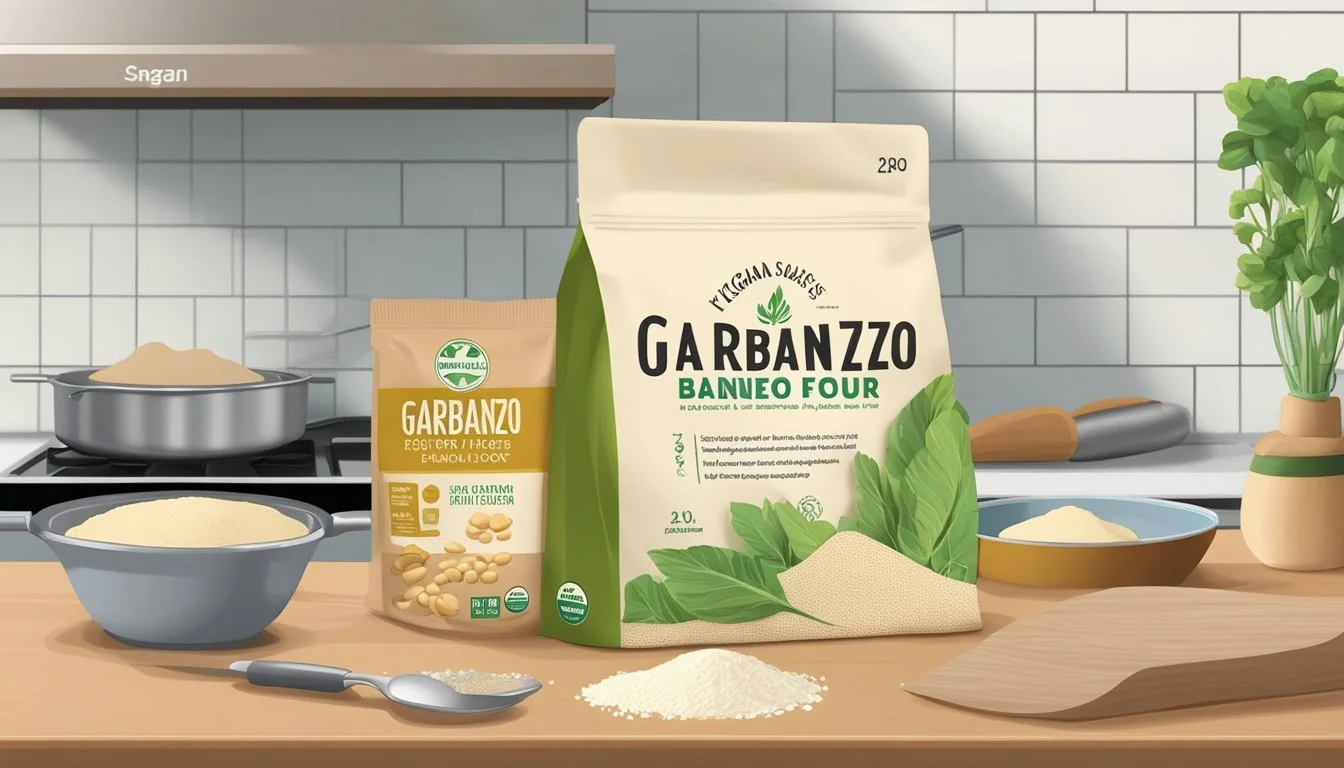Is Garbanzo Bean Flour Vegan?
Unveiling the Plant-Based Truth
Garbanzo bean flour, also known as chickpea flour or besan, is a staple in many culinary traditions around the world. With its ability to mimic the properties of eggs in baking, thicken soups and sauces, and create a variety of vegan dishes, it plays a vital role in plant-based cooking. This flour is inherently vegan, as it is solely ground from chickpeas, a type of legume, without any additives or animal-derived products.
The versatility of chickpea flour extends beyond just its culinary uses. In vegan diets, where nutritional balance is essential, garbanzo bean flour offers a high-protein alternative to wheat flour. It is also gluten-free, making it a favorable option for those with gluten intolerance or celiac disease. The flour's dense nutrient profile, including minerals like iron and magnesium, complements its standing in vegan and health-conscious kitchens.
Not only does garbanzo bean flour cater to vegan and dietary needs, but it also embraces sustainability. Chickpeas, like other legumes, are known for their nitrogen-fixing abilities, which can enrich soil health and reduce the need for chemical fertilizers. Incorporating chickpea flour into one's diet not only assures vegans of maintaining their plant-based lifestyle but also contributes to environmentally conscious eating habits.
What Is Garbanzo Bean Flour?
Garbanzo bean flour, also known as chickpea flour, besan, or gram flour, is a highly nutritious and versatile ingredient derived from ground chickpeas. It's a staple in many cuisines, offering both a rich source of plant-based protein and a gluten-free alternative to wheat flour.
Origins and Varieties
Derived from ground chickpeas, garbanzo bean flour has roots in Middle Eastern and Indian cuisines. It appears in a variety of forms: as chickpea flour from white chickpeas, and as besan or gram flour from a variety referred to as Bengal gram.
Nutritional Profile
Garbanzo flour is packed with nutrients, providing a significant source of fiber, protein, iron, magnesium, and vitamin B6. Its nutritional content makes it a healthful ingredient for numerous dietary needs.
Nutrient Amount per 100g Protein 20g Dietary Fiber 11g Iron 4.86mg Magnesium 152mg Vitamin B6 0.49mg
Culinary Uses
In the kitchen, garbanzo bean flour makes for a dense and binding component, ideal for vegan batter, thickening stews, making pancakes, or crafting tortillas with as few as 3 ingredients. It can be used in both sweet and savory dishes, expanding its culinary versatility.
Vegan Attributes
Vegan recipes benefit from garbanzo bean flour's high protein and fiber content. It serves as a dairy-free and plant-based protein option, making it suitable for those following a vegan lifestyle.
Health Benefits
Due to its fiber-rich and gluten-free nature, garbanzo flour supports digestive health and offers an alternative for those with gluten sensitivities. Its nutritional makeup also contributes to healthy iron and magnesium levels.
Comparison with Other Flours
Compared to traditional wheat flour, garbanzo flour is gluten-free and higher in protein. In the realm of gluten-free options, it's more nutrient-dense than rice flour and holds together better in recipes than flaxseed meal or buckwheat flour.
Purchasing and Storage
Garbanzo bean flour can be found in health food stores, many grocery stores, or online platforms like Amazon. To maintain its freshness, it should be stored in an airtight container within a pantry, refrigerator, or freezer.
Environmental Impact
As chickpeas are a legume, growing them is typically more sustainable and eco-friendly than the cultivation of grains. The production of garbanzo flour corresponds with a lower environmental footprint, contributing positively to eco-conscious eating habits.
Cooking with Garbanzo Bean Flour
Garbanzo bean flour, also known as chickpea flour, is a versatile ingredient favored for its high protein content and vegan suitability. It offers a gluten-free alternative to wheat flours and boasts a gently nutty taste that can enhance a variety of dishes.
Basic Preparation Techniques
To start cooking with garbanzo bean flour, one must hydrate the flour properly. Creating a base mixture typically involves whisking the flour with water until smooth, ensuring there are no lumps. The ratio for a standard batter is typically one part garbanzo bean flour to two parts water. For thicker consistencies, less water may be added.
Recipes and Ideas
Garbanzo bean flour is the cornerstone of many vegan recipes. It can be used to make:
Chickpea flour tortillas, requiring only a simple blend of garbanzo flour, water, and salt.
Vegan chickpea pancakes, which incorporate garbanzo flour and a pinch of baking powder for lift.
A substitute for eggs in baking, when mixed with water and fat, it can mimic the moistness and binding properties of eggs.
Flavor Enhancements
One can enhance the flavor of garbanzo bean flour recipes by adding:
Spices: cumin, turmeric, and garlic powder for a savory profile.
Herbs: parsley and cilantro for freshness.
Seasoning: Adjust with salt and pepper according to taste.
Substitutes and Alternatives
While garbanzo bean flour is unique, some alternatives include:
Buckwheat flour: Suitable for gluten-free recipes with an earthy taste.
Flaxseed meal: Used in vegan cooking as an egg substitute and for adding a nutty flavor.
Cooking with garbanzo bean flour can be a creative and satisfying experience for those looking for gluten-free or vegan cooking options. Its adaptability in diverse recipes makes it a pantry staple for health-conscious and allergy-sensitive cooks.
Garbanzo Bean Flour in Baking
Garbanzo bean flour, also known as chickpea flour, is a versatile ingredient in baking. It offers a high-protein, high-fiber alternative to traditional flours and is suitable for gluten-free and wheat-free diets.
Gluten-Free Baking
For individuals with celiac disease or a wheat allergy, garbanzo bean flour serves as an excellent gluten-free substitute for wheat-based flour. It can be used to produce a variety of gluten-free baked goods without compromising on the structure or taste. To enhance leavening, baking powder or baking soda is often added to recipes utilizing chickpea flour to ensure proper rise.
Creating Texture in Baked Goods
The protein content in chickpea flour contributes to a desirable texture in baked goods. When used in batter, it needs adequate hydration and a resting period to fully absorb moisture, which can improve the flavor and texture of the final product. The fiber content also aids in creating a satisfying, dense texture that's particularly beneficial in items like flatbread.
Desserts and Sweets
Chickpea flour is not only limited to savory recipes; it also excels in desserts and sweets. Its binding properties make it a good choice for items such as cookies and cakes, where it can replace all-purpose flour to provide a tender crumb. For a delicate finish, spices or sweeteners can be added to complement the subtle taste of the chickpea flour.
Savory Baking
In savory baking, the earthy flavor of the garbanzo bean flour pairs well with spices such as onion powder, garlic powder, and rosemary. It's an essential component for making various savory baked goods, from quiches (What wine goes well with quiche?) and savory pancakes to flatbreads and crackers. The flour's ability to absorb flavors makes it an ideal base for herb-infused batters and doughs.
Nutritional Considerations
When evaluating garbanzo bean flour from a nutritional standpoint, it is vital to consider its allergen profile, diet compatibility, and macro and micronutrient content, as well as its impact on weight management and digestive health.
Allergen Information
Garbanzo bean flour is naturally gluten-free, making it a suitable option for individuals with celiac disease or gluten sensitivities. However, for those allergic to legumes, especially chickpeas, this flour would not be appropriate.
Diet Compatibility
This flour is fully vegan, containing no animal products or by-products, aligning perfectly with vegan and plant-based diets. Its protein content also makes it a popular choice among those looking to supplement their protein intake with plant-based sources.
Macro and Micronutrients
Garbanzo bean flour is rich in protein and fiber which contribute to satiety and muscular health. It boasts significant amounts of essential nutrients:
Protein: An excellent source of plant-based protein
Fiber: High in dietary fiber, aiding in digestion and prebiotic benefits
Iron: Contains iron which is crucial for oxygen transport and energy levels
Magnesium: Important for muscle and nerve function
B6: Vital for brain health and creating neurotransmitters
Weight Management
The high fiber content in garbanzo bean flour can help individuals feel full longer, potentially aiding in weight control. Additionally, its low glycemic index may help maintain steady blood sugar levels.
Digestive Health
As a source of soluble and insoluble fiber, garbanzo bean flour can support hydration in the colon, promote healthy digestion, and act as a prebiotic, feeding beneficial gut bacteria.
Storing and Keeping Qualities
Proper storage is crucial for maintaining the freshness and extending the shelf life of garbanzo bean flour. This section provides guidance on how to best store the flour, ways to detect spoilage, and methods for freezing and reheating, ensuring the flour retains its quality for various uses in vegan baking and cooking.
Best Practices for Storage
Garbanzo bean flour should be stored in an airtight container to protect it from moisture and pests. A cool, dry pantry is suitable, but for prolonged freshness, storing it in the refrigerator is recommended. Keep the container sealed tightly after each use.
Shelf Life and Spoilage
The typical shelf life of garbanzo bean flour is about 6-8 months in the pantry and up to 12 months in the refrigerator. Signs of spoilage include an off smell, a change in color, or any signs of mold. Discard the flour if any of these signs are present.
Freezing and Thawing
For long-term storage, garbanzo bean flour can be kept in the freezer in an airtight container or freezer-safe bag. Label the container with the date of storage. Thawing is not typically necessary, as the flour can usually be used directly from the frozen state in most recipes for baking and cooking.
Reheating and Usage
When using garbanzo bean flour in recipes, room temperature flour is ideal. If using frozen flour, allow it to reach room temperature to ensure even mixing. This flour is often used in vegan recipes as a thickening agent or for making flatbreads, and maintaining its dry state is key to proper cooking results.
Buying Guide
When selecting garbanzo bean flour, consumers should consider availability, quality indicators such as freshness and color, cost factors including bulk buying options, and brand comparisons based on reviews and nutrition labels.
Where to Buy
Garbanzo bean flour is available at a variety of retail locations. Shoppers can typically find it at health food stores, grocery stores with a well-stocked pantry section, and online platforms like Amazon. It's advisable to look for locations that offer a range of options, as this increases the likelihood of finding a high-quality product that meets specific dietary needs.
Quality Indicators
The quality of garbanzo bean flour can be determined by several factors:
Taste: A neutral, slightly nutty flavor is characteristic of high-quality garbanzo bean flour.
Texture: The flour should have a fine, powdery consistency without any lumps.
Freshness: Check for any signs of moisture or clumping, which may indicate stale product.
Color: Expect a consistent beige color; significant variations might suggest quality issues.
Cost Factors
Price points for garbanzo bean flour can vary widely based on several factors:
Economy Size: Larger packages generally offer better value, particularly for those using the flour regularly.
Brand: Prices may reflect brand positioning within the market.
Source: Organic or specialty products can be more expensive.
Consumers should balance the importance of economy against quality and dietary preference.
Brand and Product Comparisons
Brand and product reputations can be compared through:
Reviews and Testimonials: Look for consensus in consumer feedback.
Nutrition Labels: Check for fortification, additives, and protein content.
Consumers should weigh these factors alongside personal preferences to make informed decisions.
Home Preparation and DIY
Creating garbanzo bean flour at home is a simple and rewarding process. One can gain control over the texture and purity of the flour, ensuring it's entirely vegan and free from cross-contamination with non-vegan substances.
Making Garbanzo Bean Flour at Home
To make garbanzo bean flour, one starts with dry chickpeas. Using a high-speed blender or food processor, the chickpeas are ground until they reach a fine powder consistency. It is often necessary to pulse the blender to achieve an even result, and scraping down the sides may be required to incorporate all pieces. For optimal fineness, one can sift the ground chickpeas through a fine-mesh sieve, re-processing any larger fragments that didn't pass through.
Recipe Tips and Tricks
When making this flour at home, soaking the chickpeas overnight can make the grinding process easier and could potentially enhance the final texture and taste of the flour. Thoroughly drying the chickpeas post-soaking is critical to avoid gumminess. For recipes requiring precise measurements, using a kitchen scale to weigh the flour can ensure consistency in both cooking and baking applications.
Gadgets and Tools
Investing in a high-quality blender or food processor with sharp blades is essential for achieving the finest flour possible. A kitchen scale may be used for accurate measurement, particularly in recipes where precision is crucial. Lastly, storing homemade flour in airtight containers is key to preserving its freshness and extending its shelf life for future use in various vegan recipes.







